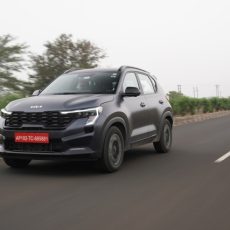BOX:
1.The man behind the beasts
Mr R. S. Shekhawat, District Forest Officer and Field Director of the Ranthambhore Tiger Reserve, is the force behind doubling the number of tigers and land of the park. On a mission to save the tiger the man stays clear of paparazzi and tabloid media that come chasing high-profile international celebrities, who, in turn, are lured by the natural beauty of the tiger reserve. Mr Shekhawat spoke candidly to CAR India and supported our continued effort to create awareness about tiger conservation
CI: What is the current size of the Ranthambore Tiger Sanctuary?
Mr Shekhawat: It is about 1,394 square kilometres, spread over the districts of Sawai Madhopur, Karauli, Bundi and Tonk. Earlier, the national park core area was just 282 sq km, but in the last three years, the critical tiger habitat has been declared as 1,136 square kilometres, which can accommodate a minimum of 25 to 30 breeding tigresses.

 CI: How many tigers were there in the reserve when you joined and what is the number now?
CI: How many tigers were there in the reserve when you joined and what is the number now?
Mr Shekhawat: The previous figures were based on pug-marks and were reported at 26 tigers. But there could be a lot of duplication using the pug-mark method and, according to me, the real count could be about 17 to 18 tigers. Right now there are about 32 tigers and four have strayed outside. We have two cubs that are not included in the number. That gives a total count of 38 tigers. We have also relocated five tigers to the Sariska National Park.
CI: There are several people who still don’t understand the importance of tiger conservation. What do you have to say to them?
Mr Shekhawat: Everybody has different approach to life under different conditions, so you can’t expect everyone to think on the same lines. A larger section of people believe that Sawai Madopur is important because of Ranthambore and Ranthambore is important because of tigers. In the end what really matters is what you and I think.
2. The charging beast
After three days of gruelling drive we covered almost 3,000 km, which would have been next to impossible if we didn’t have a sturdy ally in the shape of the Toyota Fortuner. The hunky look, robust build and mighty three-litre mill make this SUV a perfect travel companion and driver’s delight, especially in view of the surprises the Indian roads can throw at you.
During our journey from Pune to Sawai Madhopur in Rajasthan there were a couple of occasions when the highway was blocked by either overloaded lorries that had toppled over or by legions of lorries queued up at octroi post and toll booths. Either we could stay behind them for hours or take the path that other mortals wouldn’t dare to. The technical term for the path was service roads, but, in reality, it was just a never-ending stretch of ditches and humps covered by mud and slush, impossible for regular cars to drive over. The Fortuner with its all time four-wheel drive, massive wheels and high ground clearance crawled over the cratered, slushy road without a wince and in no time we cleared the unnecessary traffic.
The SUV is also comparatively very nimble which makes it a pleasure to drive in congested cities that we crossed during our expedition. Due to the sheer size of the Toyota it takes a fraction longer to reach high speeds, but once it does, it goes charging like a beast and can keep up with much lighter sedans. The ride quality, suspension, large supportive seats and the powerful air-conditioning system make the inside of the Fortuner a very comfortable place to be in the sunny afternoons of Gujarat and Rajasthan. Having successfully conquered unceasing highways, chaotic cities, villages and even some jungle roads we couldn’t have asked for a more rounded-off partner for this adventurous drive.




